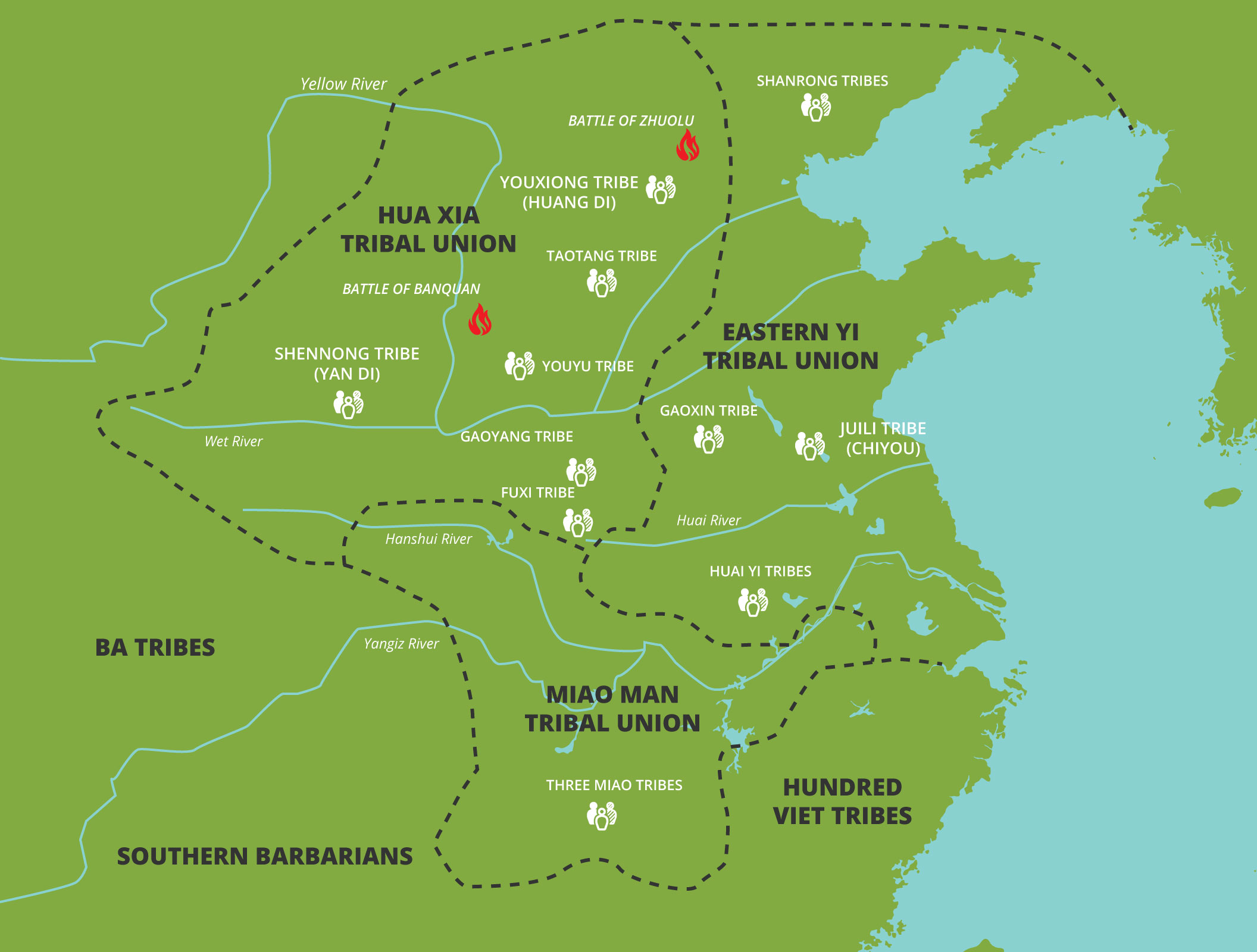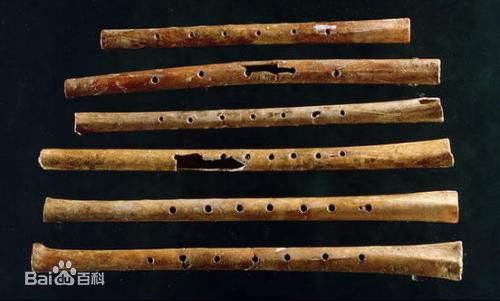
Introduction
According to sources from over five-thousand years of recorded Chinese history, music has always played a role in court and folk settings. Early sources ascribe the origins of music to an integrated performance art that included music, dance, and poetry. Gradually, folk songs, court music, instrumental music, ballads, operas, and other musical traditions evolved in different locations, were brought in by outsiders or were adapted by members of distinct Chinese ethnic populations to fit their various geographic, economic, cultural, and religious contexts. Many of these genres have long traditions, but others boomed during specific historical periods and faded out afterwards along with the social structures that supported them.
Clan and slave societies (c.2700-475 BCE)
Recorded Chinese history starts from what is now called clan society-tribes organized in large, extended families (clans). Around 2700 BCE, the tribes who resided on the Upper Yellow River joined together and elected three rulers named Huangdi (Emperor): Yao, Shun, and Yü the Great, a group of mythological rulers or deities in ancient northern China that today are considered culture heroes and contemporary historians believe may have established a unified and hierarchical system of government in a transition period to the patriarchal Chinese feudal society.
Archaeological findings from the period include whistles (Figure 1) and ocarinas made of ceramics, and percussion instruments made of stone. Written records mention the genre yuewu-a mixed performance of poetry, singing, and dancing, which gradually came to include ritual uses, narrations of the people's large-scale events, as well as aspects of their daily lives. For instance, the piece 'Da xia' recounts how the hero Yao tackled the problem of flooding. Meanwhile, the short, eight-word yuewu 'Tan ge' explains how a hunter cut bamboo to make a bowl for a sling, adding a stone bullet to shoot at the birds and beasts (Xia 1989: 4).
By around 2033 BCE, these clans had blended and become more organized. It was around this time that Chinese dynasties emerged with the first feudal dynasty, the Xia Dinasty, leading to a succession of strongly centralized, monolithic governments that claimed to hold the 'mandate of heaven' in ruling over their subjects. The Xia were followed by the Shang and the Western and Eastern Zhou dynasties, and then the Spring and Autumn Period, which lasted until 475 BCE (Liao 1964: 7), and finally the Warring States Period. At times, the land was united under one ruling dynasty, but at other times competing dynasties controlled different regions. Slaves formed the lowest rung in Xia society, and the rulers controlled or competed for vast resources, areas, and populations. The sheer scale of their endeavors resulted in the emergence of specialized new professions, among which were the wu (witches), who communicated between humans and gods through a combination of singing and dancing. Meanwhile, the yuewu remained the main court music of the period.





Modern Chinese songs were promoted by those advocating different religious and political stances in the age of national revival and modernization.







